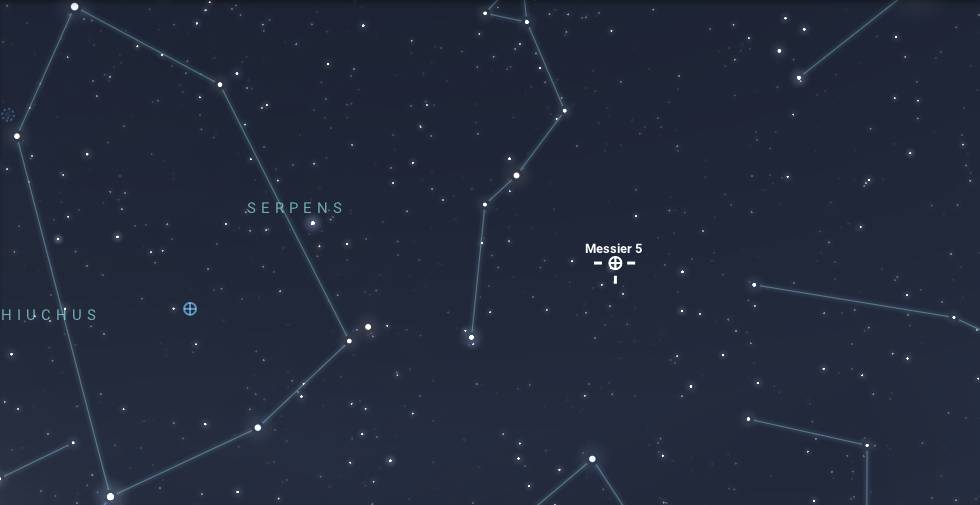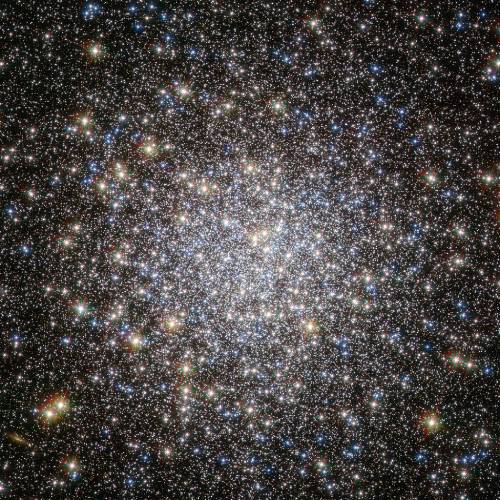Messier 5 (M5) is a prominent globular cluster located in the constellation Serpens, approximately 24,500 light-years from Earth. This massive cluster was first recorded by German astronomer Gottfried Kirch in 1702, who noted it while observing a comet. Charles Messier later catalogued it in 1764 as the fifth entry in his list of non-cometary celestial objects.
Composition
Messier 5 is a densely packed spherical cluster that spans around 165 light-years in diameter and contains hundreds of thousands to possibly over a million stars. The stars within M5 are typically very old, metal-poor, and held together by strong gravitational forces. In the core region, the stellar density is incredibly high, resulting in a tightly packed cluster of stars.
The cluster’s stars are estimated to be around 13 billion years old, making them among the oldest stars in our galaxy. Due to their age, a large proportion of these stars have evolved into red giants. However, there is also a diverse stellar population that includes main-sequence stars as well as blue stragglers, which are stars that appear younger and hotter than others in the cluster due to stellar interactions. These blue stragglers likely formed from the mergers of two or more stars, common in the dense environments of globular clusters.
Observation
M5 is best observed from the Northern Hemisphere during late spring and early summer, with optimal viewing from April to July when the constellation Serpens is well-placed in the sky. This cluster can also be observed from the Southern Hemisphere during autumn to early winter, specifically in the same April-to-July window.

With an apparent magnitude of approximately 5.6, M5 is one of the brighter globular clusters, potentially visible to the naked eye under ideal, dark-sky conditions. Through binoculars, M5 appears as a faint, fuzzy patch of light. However, to resolve more details within the cluster, a telescope is recommended. Small telescopes (4–6 inches in aperture) reveal the cluster’s structure and can start to resolve individual stars, especially around the outer edges. Larger telescopes provide an even more detailed view, allowing amateur astronomers to observe the densely packed core and distinguish numerous stars across the cluster.
Observing Messier 5 is a rewarding experience, especially as a showcase of ancient stellar populations. Its brightness, size, and dense core make it a fascinating target for both beginner and experienced astronomers.



